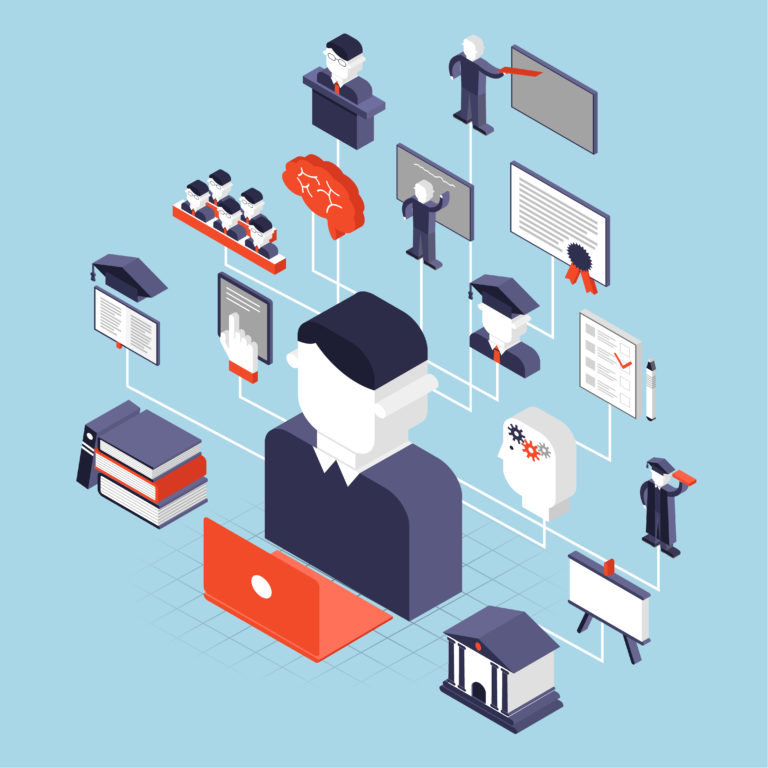When anyone thinks of a customer relationship management (CRM) system, they think of it as an enterprise business solution as it allows an organization to manage customer data. As a result, the idea of utilizing a CRM in a higher education setting seems unlikely. Yet with the issue of falling revenues and rising costs, CRM is gaining usage in the higher ed sector as a way to manage the student cross-life-cycle.
What are the benefits of a student’s cross-life-cycle CRM?
Simply put, it improves relationship management between the university and the student. Using a higher ed CRM coupled with the right business process management software, institutions are able to:
- Connect with students through communication channels
- Create interactions that are targeted and specific to the student
- Create high-quality experiences through workflows
- Make educated resourcing decisions with regards to interactions
- Create a 360-view of the student journey.
How Can a CRM Be Applied in Higher Ed?
Many people hold the false perception that higher ed institutions use CRM only to manage transactions between departments. But, according to Gartner, “Student cross-life-cycle CRM is a CRM deployment that creates a campuswide, 360-degree view of a student across their major life cycle phases, beginning with pre-college and moving through prospect, applicant, enrolled, graduated and alumni statuses. This is in contrast to a departmental CRM implementation that is focused on a single functional and siloed set of business processes.”
In order for post-secondary institutions to implement a CRM properly, they need to think of it as a strategy first and a solution second. Think of it as a three-way approach.
- What are your institution’s goals?
- Do you need a strategic or transactional CRM?
- What are organizational factors to consider?
- Need to think of process definitions, roles, and organizational dependency.
- Where does it all fit in?

Now, implementing a cross-life-cycle CRM will be challenging. Success requires a well-thought-out high-level plan that leads to an integrated and holistic view of the student experience. The initiative must include a broad range of stakeholders early in the process, from admissions, alumni affairs, operations, student services, admissions, and more. One must also think of the student life cycle.
According to a DePaul University case study:
“While it might seem counterintuitive to think of students as customers, this description accurately reflects the kind of relationship students establish during college [4]. Viewed from the CRM lens, the concept of the customer life cycle can be mapped to the stages that a student progresses through when considering and using the services of a learning institution to form the student life cycle. Within a student life cycle, a student progresses through the following stages: Suspect, prospect, applicant, admitted, enrollee, and alumni
- Suspect: A suspect is any student who might be a potential candidate for the school.
- Prospect: A prospective student is at the information gathering and opinion-forming stage.
- Applicant: A student is an applicant when he/she makes the decision to join the institution.
- Admitted: A student is admitted when the college makes a decision to accept the student
- Enrollee: This is the stage where students become a part of the institution.
- Alumni: At this stage, students who are satisfied with their academic experience will develop long-term loyalty to their alma mater.
Converting suspects to admitted students represents the marketing components of a CRM, while the conversions of admitted students to enrollees represent sales, and the participation in alumni activities represent the retention and support components of a CRM.
Success also requires organizational collaboration and the right business process management software in place. Integrating a CRM system with a BPM platform makes each conversion in the student lifecycle smoother by connecting all major points in the student lifecycle together. The moment a prospect is entered into a BPM platform through a CRM, the journey of that prospect is tracked at each interaction with the higher ed institution. This way, information is collected about each conversion to improve conversion rates in the future, allowing higher ed institutions to use data to create highly targeted marketing and sales efforts.
In the end, your CRM should allow you to:
- Plug in new CRM elements
- Utilize new and changing communication channels
- Accommodate new constituencies without complete redesign
The road ahead
A campus-wide CRM would allow universities to connect to the student in a way that traditional information management alone does not allow. Embracing the complexities of the ever-changing student journey is, in a way, a strategy for future-proofing higher ed institutions. Those who embrace technology and utilize it to better educate, prepare, and engage with their current and former students will find themselves ahead of those who do not.





